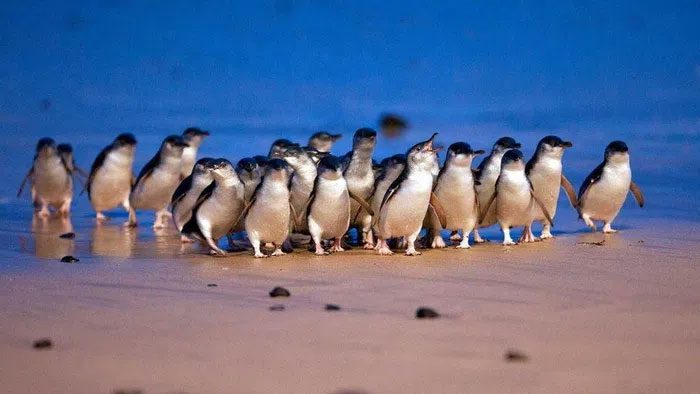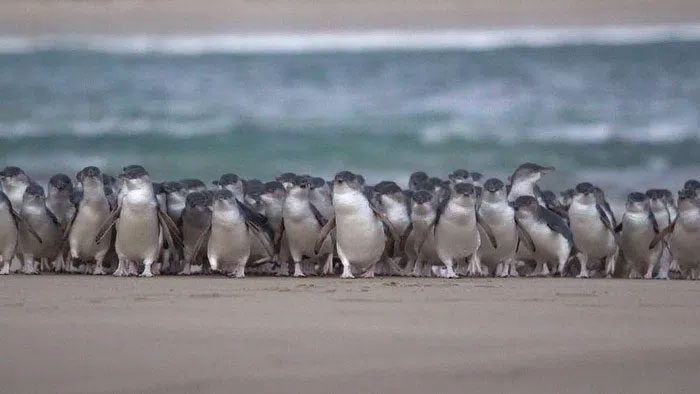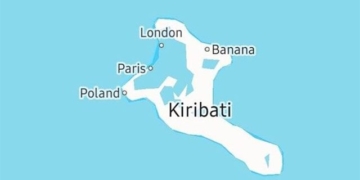Thousands of the World’s Smallest Penguins Parade on Phillip Island, Australia
As the sun sets, thousands of tiny black-and-white penguins gather to participate in the largest penguin parade on Phillip Island, Australia.

Approximately 5,200 small penguins, measuring up to just 40 cm, cross the beach.
Phillip Island, Australia is home to a colony of small black-and-white penguins. With a population of about 40,000, it is the site of the largest penguin colony in the world.
Every day at sunset, the penguins of Phillip Island swim ashore to hunt for fish, squid, mollusks, and small crustaceans. Afterward, they head inland towards their nesting sites. Locals refer to this event as the penguin parade, which attracts a large number of tourists eager to witness the spectacle.
The island’s nature park provides visitors with a spot to sit and watch the small penguins emerge from the water for about 50 minutes.
Paula Wasiak, a natural researcher, stated: “The little penguins are nocturnal and active in the evening. It’s amazing that the presence of these little penguins has been maintained at this location for over 450 years. This year, we couldn’t believe our eyes when we saw over 5,000 penguins parade in less than an hour.”
To count the number of penguins, staff had to position themselves at four locations along their main “highway.” These are designated pathways for the penguins to reach the shore. The little black-and-white birds travel in groups, using the same route. During the 50-minute journey, staff counted each penguin that passed by.
The previous record was set in November 2021 when 4,435 little penguins paraded ashore simultaneously.

This year, the penguins had to gather more along the coastline rather than searching for food far away.
This year’s large parade in May is considered unusual. According to experts, the impact of the La Niña phenomenon this year, coupled with strong trade winds sweeping across the Pacific from South America to Indonesia, has decreased the offshore food supply for the penguins, forcing them to concentrate closer to shore.
As a result, the penguins had to gather more along the coastline rather than venturing far for food. Typically, when not breeding, penguins spend up to a month foraging at sea.
The abundant food supply near the shore allows the penguins to prepare for breeding in the fall. Historically, the largest parades occur in November and December, which are peak breeding months for the species.
Excellent breeding conditions and conservation efforts by authorities to improve sand dune structures and restore habitats contribute to the maintenance and increase of the penguin population on the island.





















































